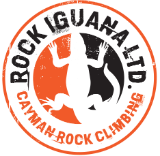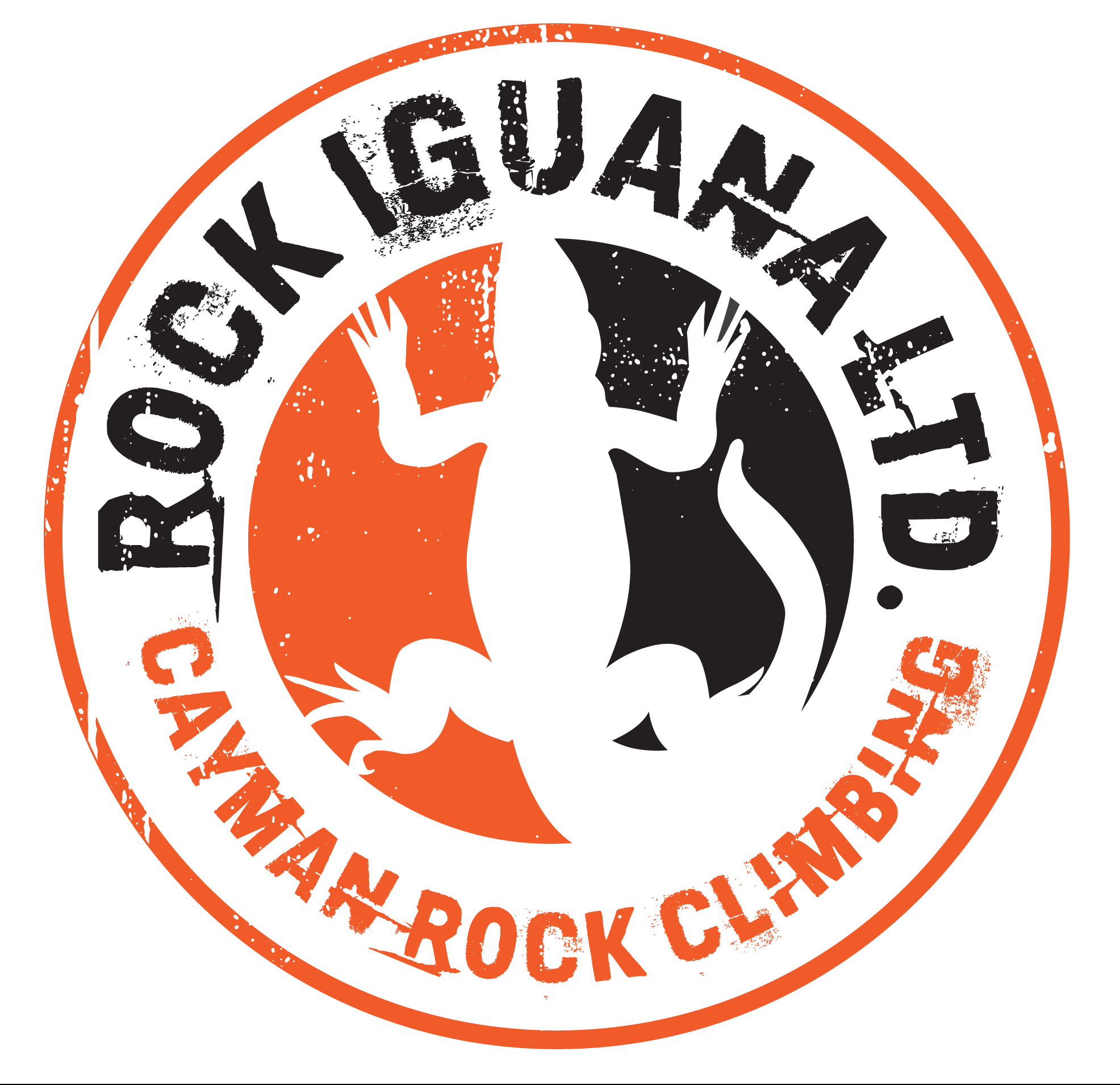.
In Cayman Brac, we are blessed to climb in a tropical paradise alongside exotic plants and animals. Birds swooping above you, turtles swimming below you, and crabs climbing beside you – this is the magic of Caribbean climbing.
Rock climbing is an outdoor sport that generally has a low impact on our environment, but as with all outdoor activities, there are ecological considerations to keep in mind. Bird nests are the chief concern in the Brac.
Cayman Brac is an important seabird nesting site in the Western Caribbean. The towering bluff is a significant resource for seabirds and for thousands of years it has provided shelter from predators and the raging sea. Seabirds nest high along the bluff to avoid disturbance, so it is important that we respect these majestic creatures and let them raise their families in peace.
White-tailed tropicbirds and brown boobies are the Brac’s famous bluff-nesting birds, but they are in trouble. Both colonies have seen a rapid population decline in recent years, and they are threatened to become locally extinct. These birds typically raise 1 chick per year, which means population recovery is a slow process. Losing even a single nest is a huge loss to the colony, so we need to do everything we can to support these iconic birds of the Brac.
Thankfully, climbing’s impact on bird nests is easy to mitigate. All we need to do is avoid climbing near them during nesting season. There are over 140 routes and counting in the Brac, and in a typical year, only a handful of climbing routes are closed due to bird nests. Our climbing community has always been close-knit, so we have traditionally handled route closures through word-of-mouth. As the community grows, it is important to ensure that everyone is in the loop by formalising the route closure process with route tags, signs, and online resources.
Route closures will be kept up-to-date on this page, so check it before you climb and let us know if you see a bird nesting near a climbing route.

Brown Boobies
Cayman Brac is home to the only breeding colony of brown boobies in the Cayman Islands. One of the most important nesting locations is on the edge of the eastern bluff near the lighthouse trail. This area, known as “The Point” to climbers, is home to many world-famous routes. From December to May, you can often spot the boobies perched along the cliff edge protecting their eggs and their adorable fluffy chicks.
The Brac’s booby population has declined dramatically in recent years due to a number of factors including feral cat predation and human disturbance. In the early 20th century, the booby population was thought to be in the thousands and the nesting colony spanned nearly the entire coast of Cayman Brac. By the time the population was first surveyed in 1983, only 170 pairs were recorded. By 2019, the colony had crashed to 46 pairs in 3 limited areas of the coast. The colony is dangerously close to local extinction.
Although boobies seem to tolerate human presence, these stoic birds get incredibly stressed when their nests are approached. Boobies have even been known to abandon nesting areas that are continuously disturbed. It is recommended to stay as far as possible away from nests to avoid causing additional stress to mothers and chicks. Be sure to be on the lookout in the winter and spring when approaching climbs at the point. If you spot a booby near your route, simply pick another one, there are plenty! Contact us at info@climb.ky if you see a booby nest near a climbing route and we will add it to the list of seasonal route closures.

Tropicbirds
White-tailed tropicbirds, locally known as bosuns, are seasonal breeding residents on Cayman Brac from February to July. During these months, they nest in caves and holes along the bluff face. They are renowned for their beautiful streaming tails and spectacular mating dances. You can spot in them in the morning hours on both north and south coast, continuously flying by the bluff looking for suitable nesting locations.
For reasons still unknown, the Cayman tropicbird population has collapsed in the last few decades. In the 1980s, around 800 individuals were reported in the Cayman Islands. In 2017, only 70 nests were reported. Research is still underway to determine the exact cause of this decline, but it is likely due to multiple factors including invasive species, human disturbance, and the overall decline of ocean health.
Nesting areas can overlap with climbing areas, so it is critical to be on the look out and report any nests near climbing routes. In recent years, there have been nests reported at Dixon’s Wall and Backyard, but it is possible for them to nest anywhere along the bluff. These nests are usually impossible to see from the ground, so we have developed a tagging system to notify climbers of route closures before they climb. The first bolt of a closed route will be tagged with a route closure sign until the nesting season is finished. Contact us at info@climb.ky if you spot a tropicbird nest near a climbing route and we will add it to the route closure list and clip a tag to the route.

Man-o-wars (Frigatebirds)
Magnificent frigatebirds, locally known as man-o-wars, are year-round residents in Cayman Brac. These massive black seabirds are well-known for their effortless flight and kleptoparastic feeding behaviour. When a tropicbird or booby returns from feeding at sea, man-o-wars will hunt them down trying to steal their catch by harassing them until they disgorge the fish. These acrobatic battles can last over 20 minutes and are a wild spectacle to watch.
Man-o-wars do not nest in the Brac, but they do roost in a quiet safe place during the night. One of the most common roosting areas is at First Cay in the Sector Seahorse area. These birds are incredibly graceful in the sky, but very awkward on land so it takes a serious effort every night to land at a roost. They begin landing in this area about 30 minutes before the sunset, so it important to finish any climbing at the Seahorse Stack (Ocean Pony, Sea Stallion) an hour before sunset to avoid disturbing them. It also important to keep as much distance as possible and remain quiet when returning from Wave Wall or Sector Seahorse after dusk. Seeing dozens of giant bird silhouettes in the setting sun is another true natural wonder of Cayman Brac. Be sure to watch from a distance so these birds always feel at home in this area.

How else can I help?
Many other factors besides human nest disturbance are responsible for the decline in seabird colonies:
- Habitat destruction
- Feral cat predation
- Rat predation
- Raptor predation
- Overfishing
- Plastic pollution
Support Brac Land Conservation
Only a tiny percentage of land in the Brac is protected and many areas are beginning to experience rapid development. Almost none of the eastern bluff edge or base is protected, leaving critically important nesting areas vulnerable to habitat destruction and human disturbance. You can contribute to Brac conservation by donating to the National Trust and by supporting public initiatives such as nominating land for protection under the National Conservation Law
Support Cat Population Control
The feral cat population has exploded in the last decade and it is likely the greatest local threat to our seabirds. In both sister isles, the situation is out of hand and is only getting worse. Local charities halted the government’s humane culling programme with a court injunction, hoping to deal with this problem using a trap, neuter, vaccinate, and release (TNVR) programme. Unfortunately, the feral cat population has grown too large for this approach and at this point humane culling is the only way forward. The booby and rock iguana populations of Cayman Brac face local extinction if we do not act now. Give your public support to the humane culling programme. The Brac Humane Society has been working hard to bring veterinarians to the island each month to spay and neuter cats. Support this initiative by volunteering or donating funds. If you live in the Brac: spay or neuter your cat, keep it indoors at night, and put a bell on its collar to help save our native species.
Eat Sustainable Seafood (or none)
Global fish stocks are being depleted at an alarming rate. The UN food and agriculture organisation estimates that 90 percent of global marine fish stocks are fully exploited or overfished. Seabirds get 100% of their food from the sea, so less fish = less birds. On top of that, a large proportion of marine plastic pollution comes from discarded fishing equipment. 70% of large floating plastic pollution comes from fishing. Marine life, including seabirds, can become entangled in ghost nets and discarded lines and die a horrible death.
Not all seafood is created equal though. With a little research, you can choose fish that comes from sustainable populations and is caught using sustainable practices. The Cayman Sea Sense project is a local sustainable seafood education program dedicated to helping the public make informed and environmentally positive seafood choices. They created a very useful guide for choosing responsible seafood in Cayman. Eating less seafood is the best option, but when you choose seafood for dinner, make sure it comes from a sustainable source.
Use Less Plastic
Plastic pollution has been decimating seabird colonies around the world for the last few decades. Evidence of white-tailed tropicbirds ingesting plastic in Hawaii was first reported in 2013. Brown boobies are not known to ingest plastic, but they are known to build their nests with plastic fragments that have become all too common on our beaches. This problem is only getting worse every year and the only solution is to stop using unnecessary plastics. Only a tiny percentage of the plastics we buy end up recycled. The rest ends up buried in our land for centuries or floating in the ocean. The choices that we make when buying products make a difference. Always choose plastic-free.

Clean a Beach
Besides using less plastic, cleaning a beach is one of the best ways to reduce ocean plastic pollution. The Cayman Islands are situated directly in an easterly current that brings a constant barrage of plastic pollution from Jamaica, Hispaniola, and farther abroad. The sister isles are hit especially hard and many beaches are completely filled with plastic. Many of these littered beaches are prime nesting habitats for boobies. Show the boobies some love by cleaning up after your fellow humans.
Climb on! Bird on!



Leave a Reply